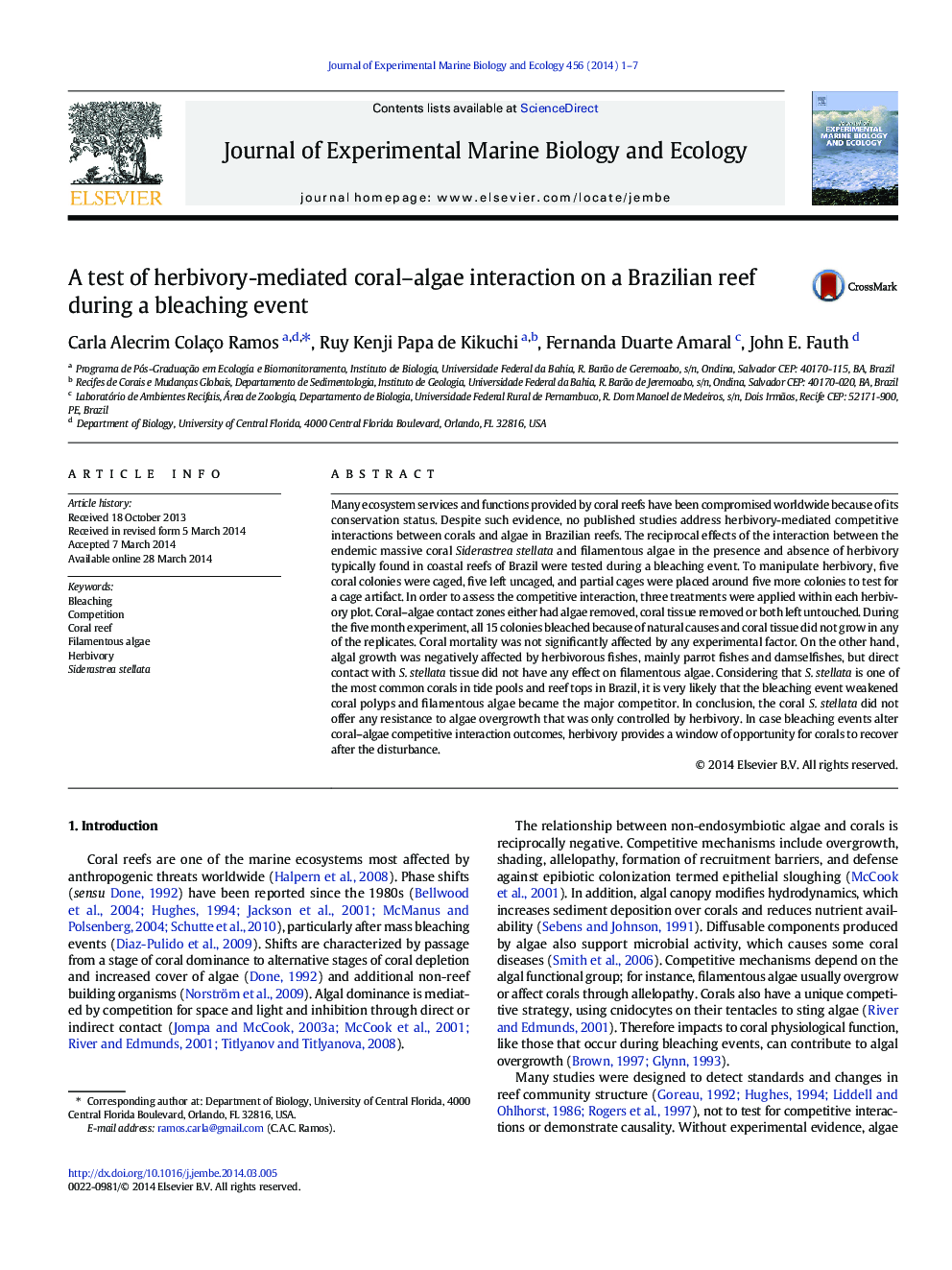| کد مقاله | کد نشریه | سال انتشار | مقاله انگلیسی | نسخه تمام متن |
|---|---|---|---|---|
| 4395536 | 1618419 | 2014 | 7 صفحه PDF | دانلود رایگان |
• We test herbivory-mediated interaction of a Brazilian coral and filamentous algae.
• The experiment was held during a bleaching event caused by the 2009–2010 El Niño.
• Coral mortality was not affected by herbivory or direct contact with algae.
• Coral did not offer resistance to algae overgrowth, that was only controlled by herbivory.
• Herbivory might facilitate recovery of coral colonies after bleaching events.
Many ecosystem services and functions provided by coral reefs have been compromised worldwide because of its conservation status. Despite such evidence, no published studies address herbivory-mediated competitive interactions between corals and algae in Brazilian reefs. The reciprocal effects of the interaction between the endemic massive coral Siderastrea stellata and filamentous algae in the presence and absence of herbivory typically found in coastal reefs of Brazil were tested during a bleaching event. To manipulate herbivory, five coral colonies were caged, five left uncaged, and partial cages were placed around five more colonies to test for a cage artifact. In order to assess the competitive interaction, three treatments were applied within each herbivory plot. Coral–algae contact zones either had algae removed, coral tissue removed or both left untouched. During the five month experiment, all 15 colonies bleached because of natural causes and coral tissue did not grow in any of the replicates. Coral mortality was not significantly affected by any experimental factor. On the other hand, algal growth was negatively affected by herbivorous fishes, mainly parrot fishes and damselfishes, but direct contact with S. stellata tissue did not have any effect on filamentous algae. Considering that S. stellata is one of the most common corals in tide pools and reef tops in Brazil, it is very likely that the bleaching event weakened coral polyps and filamentous algae became the major competitor. In conclusion, the coral S. stellata did not offer any resistance to algae overgrowth that was only controlled by herbivory. In case bleaching events alter coral–algae competitive interaction outcomes, herbivory provides a window of opportunity for corals to recover after the disturbance.
Journal: Journal of Experimental Marine Biology and Ecology - Volume 456, July 2014, Pages 1–7
